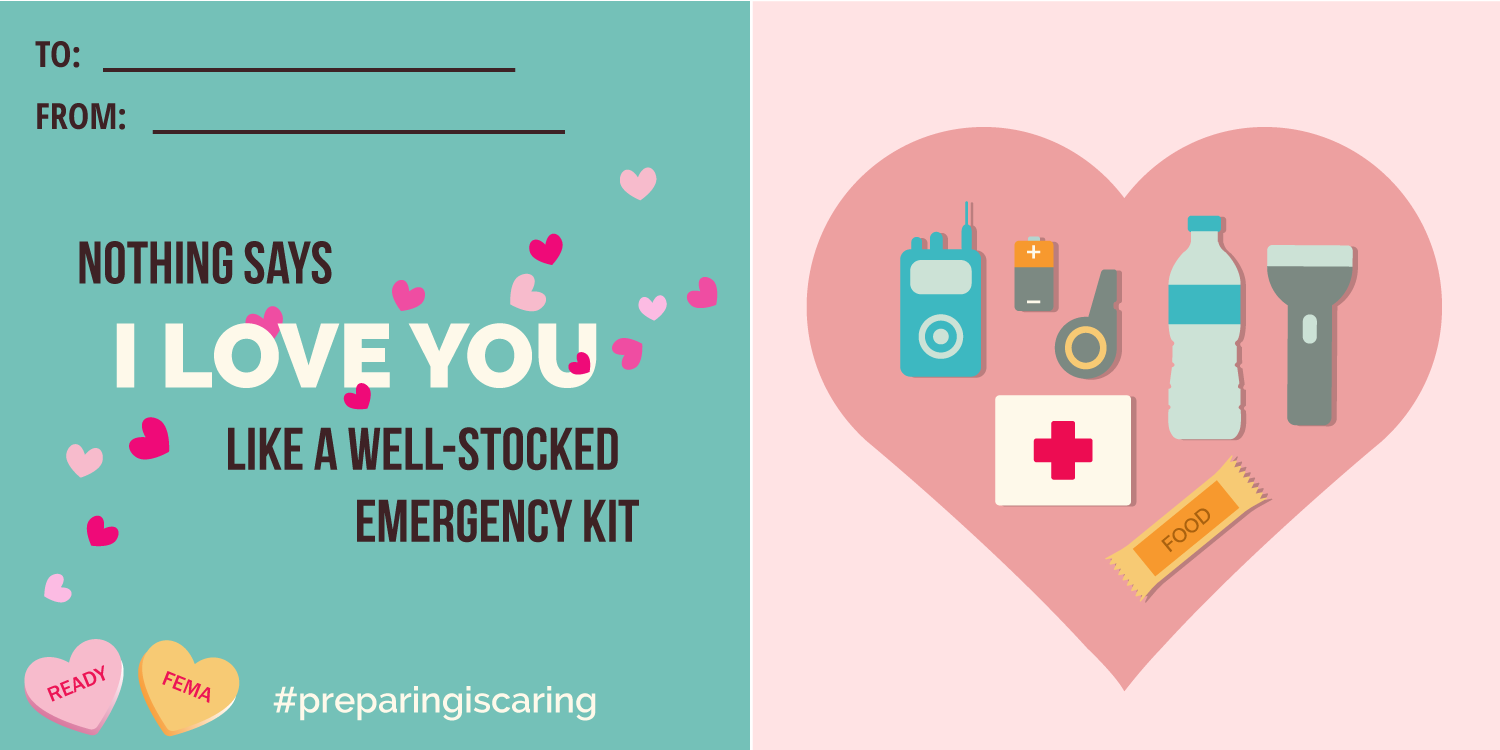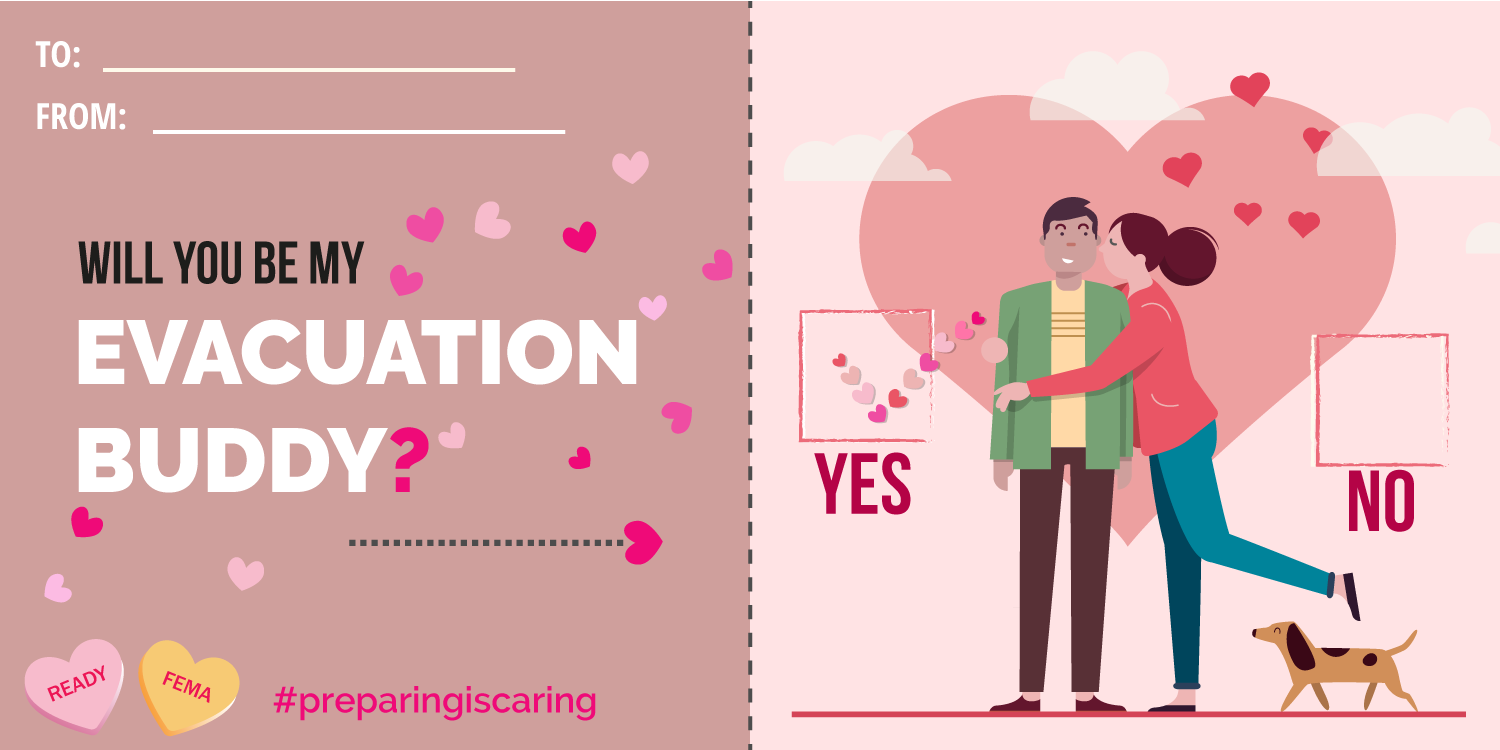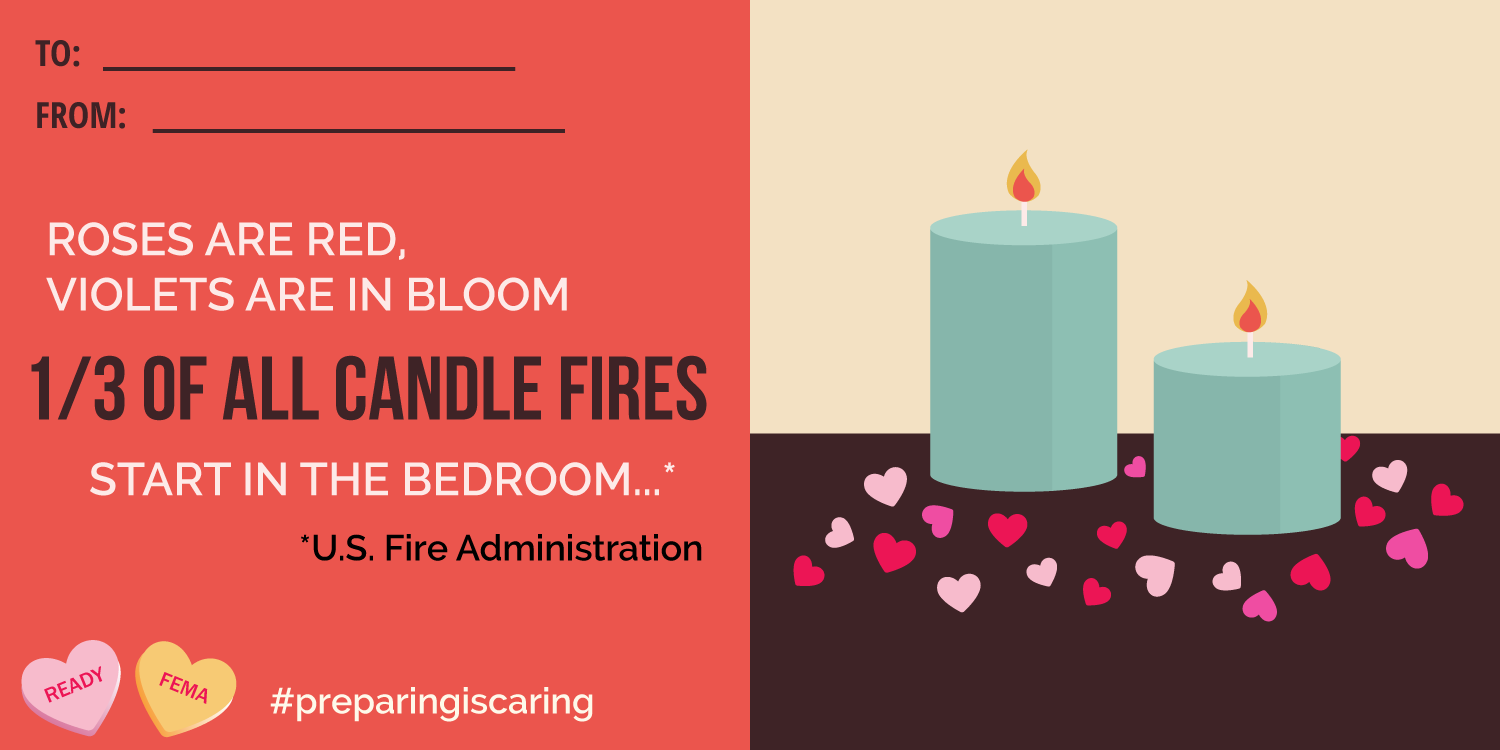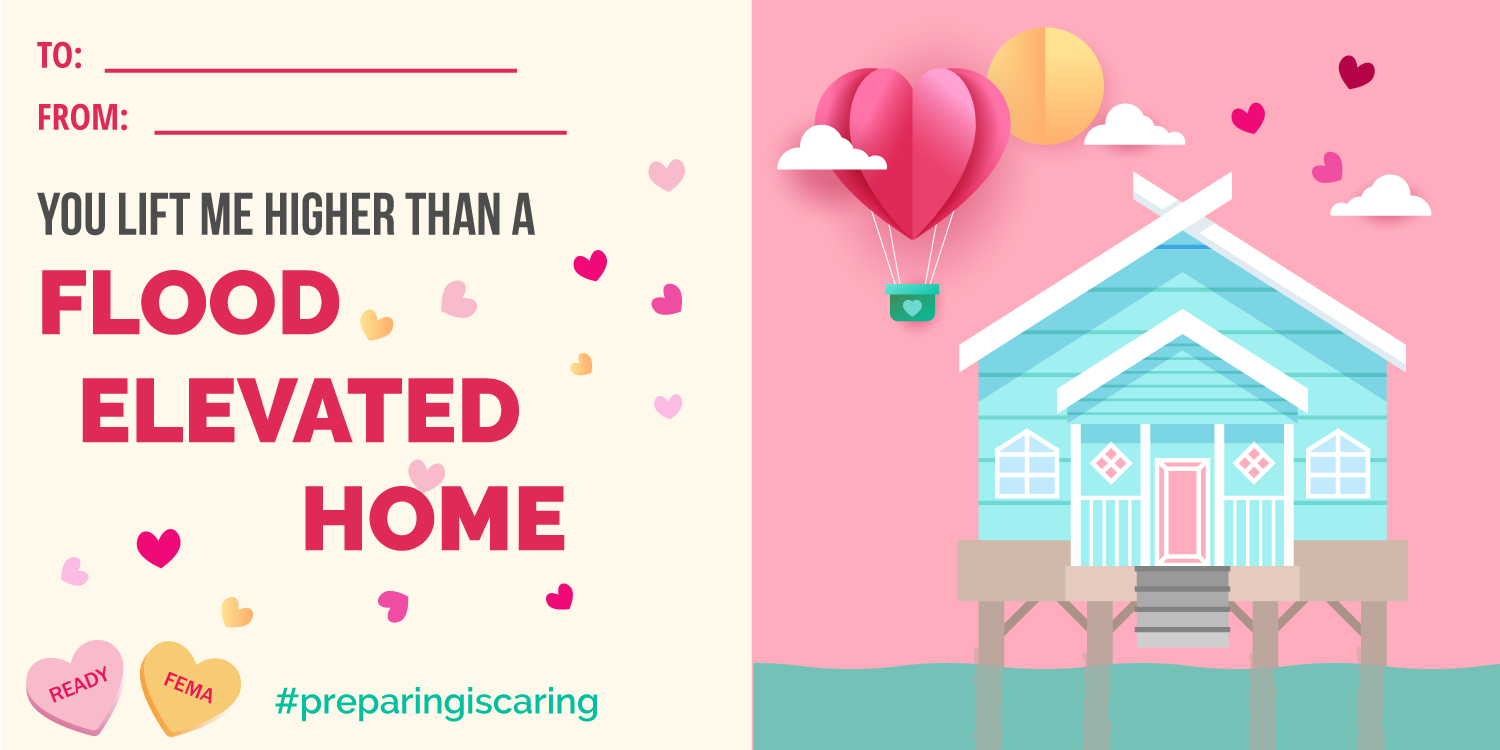Emergency preparedness may not be the first thing that comes to mind when you think of Valentine's Day, but it could be the most important gift you give your loved ones this year. Disasters can happen at any time, and having a starter emergency kit for the home or the road could make all the difference in an emergency.
Here are four thoughtful valentines you can give to those you hold dear.
Emergency Kit

This Valentine’s Day card says it all. Do you and your loved ones have the items you need in case of an emergency?
If not, one great gift that really shows your love is a disaster preparedness kit. When building your kit, include items such as:
- Water (one gallon per person per day for several days for drinking and sanitation).
- Food (at least a several-day supply of non-perishable food).
- Battery-powered or hand crank radio and a NOAA Weather Radio with tone alert.
- Flashlight.
- First aid kit.
- Extra batteries.
- Whistle (to signal for help).
Remember that your kit will depend on you and your loved one’s needs. Once you have the basic items, consider what unique needs there are. If you have a pet, be sure to include pet supplies such as food and toys.
Evacuation Plan

Are you and your valentine daydreaming about spending quality time together? While you're at it, remember to plan for where you’ll go if you need to evacuate during a disaster. You may not be together when an emergency occurs, so planning beforehand means you’ll always know where your partner will be during a disaster.
Prepare an evacuation plan for you and your valentine with the tips below.
Before an Evacuation
- Learn the types of disasters that are likely in your community and the local emergency, evacuation and shelter plans for each specific disaster.
- Plan how you will leave and where you will go if you are advised to evacuate.
- Identify several places you could go in an emergency such as a friend’s home in another town or a motel. Choose destinations in different directions so that you have options during an emergency.
- If needed, identify a place to stay that will accept pets. Most public shelters allow only service animals.
- Make sure you have a portable emergency kit in the car.
During an Evacuation
- Check the FEMA app for a list of open shelters in your local area during an active disaster.
- Listen to a battery-powered radio and follow local evacuation instructions.
- Take your emergency supply kit.
- Leave early enough to avoid being trapped by severe weather.
- Take your pets with you but understand that only service animals may be allowed in public shelters.
After an Evacuation
- If you are returning to disaster-affected areas after significant events, prepare for disruptions to daily activities and remember that it is dangerous to return home before storm debris is cleared.
- Let friends and family know before you leave and when you arrive.
- Charge devices and consider getting backup batteries in case power outages continue.
Fire Safety

Do you and your valentine like to create the perfect ambiance with candles? Switching to battery-operated candles may be a good idea to help prevent candle fires.
Fires can be deadly, and it's important to be prepared. Here are the most essential tips to keep in mind:
- Install smoke alarms on every level of your home, including the basement.
- Replace the entire smoke alarm unit every ten years or according to the manufacturer’s instructions.
- Create and practice a fire escape plan with two ways out of each room.
- Keep a fire extinguisher in your kitchen.
- If there is a fire, drop down to the floor and crawl low under any smoke to your exit.
- If your clothes catch fire, stop, drop and roll.
- If pets are trapped inside your home, tell firefighters right away.
- Before opening a door, feel the doorknob and door. If either is hot or smoke is coming around the door, leave the door closed and use your second way out.
Fire can spread rapidly. In less than 30 seconds a small flame can turn into a major fire. Keep your Valentine's Day plans from going up in flames by keeping the heat between you and your sweetheart and not in your home.
Flood Safety

Do you own a home with your valentine? Make sure it’s protected from flooding!
You can do this by:
- Documenting all your belongings. This will help you with the insurance claims process if your home ever suffers from flooding damage.
- Check your insurance. Most homeowners’ insurance policies don’t cover flood damage.
- Store valuables and important documents in waterproof or water-resistant containers.
- Elevate important items in your house. If you can, make sure that units located on ground level, such as furnaces, water heaters, electrical systems, and other utilities, are raised off the ground.
By giving the gift of preparedness, you're showing your loved ones how much you care about their safety and well-being while also giving them peace of mind. Being prepared can make all the difference in an emergency, and it's a gift that will last long after Valentine's Day.
This year, spread love and safety by giving the gift of preparedness. For more information on emergency preparedness and how to put together an emergency kit, visit Build A Kit | Ready.gov. You can also download the printable emergency checklist to include in your Valentine’s Day gift.
For more information on disasters and ways to prepare, visit Plan Ahead for Disasters |Ready.gov.


